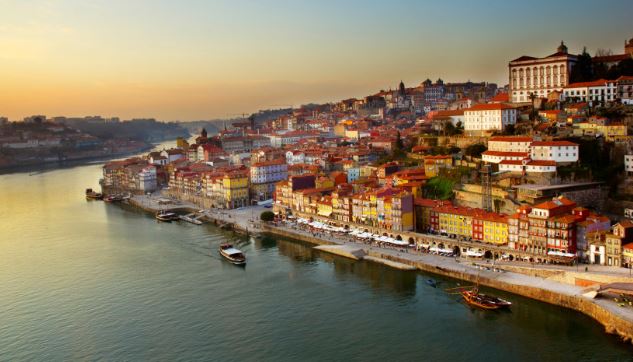Iberian Peninsula

The Iberian Peninsula /aɪˈbɪəriən/,[a] also known as Iberia,[b] is a peninsula in the southwest corner of Europe, defining the westernmost edge of Eurasia. It is principally divided between Spain and Portugal, comprising most of their territory, as well as a small area of Southern France, Andorra, and Gibraltar. With an area of approximately 583,254 square kilometres (225,196 sq mi),and a population of roughly 53 million,it is the second largest European peninsula by area, after the Scandinavian Peninsula.
The word Iberia is a noun adapted from the Latin word “Hiberia” originating in the Ancient Greek word Ἰβηρία (Ibēríā), used by Greek geographers under the rule of the Roman Empire to refer to what is known today in English as the Iberian Peninsula. At that time, the name did not describe a single geographical entity or a distinct population; the same name was used for the Kingdom of Iberia, natively known as Kartli in the Caucasus, the core region of what would later become the Kingdom of Georgia. It was Strabo who first reported the delineation of “Iberia” from Gaul (Keltikē) by the Pyrenees and included the entire land mass southwest (he says “west”) from there. With the fall of the Roman Empire and the consolidation of romanic languages, the word “Iberia” continued the Roman word “Hiberia” and the Greek word “Ἰβηρία”.
The ancient Greeks reached the Iberian Peninsula, of which they had heard from the Phoenicians, by voyaging westward on the Mediterranean. Hecataeus of Miletus was the first known to use the term Iberia, which he wrote about circa 500 BC. Herodotus of Halicarnassus says of the Phocaeans that “it was they who made the Greeks acquainted with […] Iberia.” According to Strabo, prior historians used Iberia to mean the country “this side of the Ἶβηρος” (Ibēros, the Ebro) as far north as the Rhône, but in his day they set the Pyrenees as the limit. Polybius respects that limit, but identifies Iberia as the Mediterranean side as far south as Gibraltar, with the Atlantic side having no name. Elsewhere he says that Saguntum is “on the seaward foot of the range of hills connecting Iberia and Celtiberia.”
Strabo[14] refers to the Carretanians as people “of the Iberian stock” living in the Pyrenees, who are distinct from either Celts or Celtiberians.

